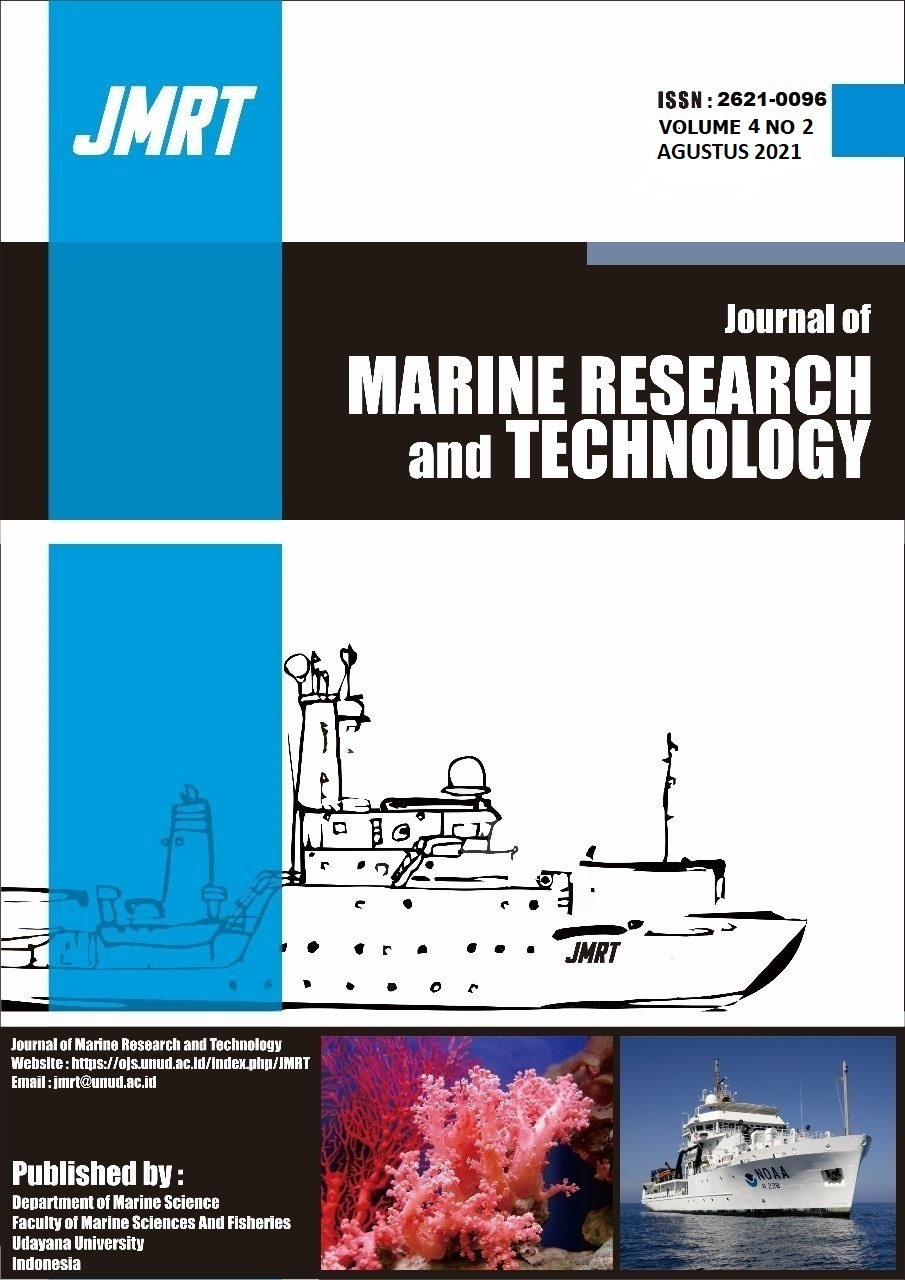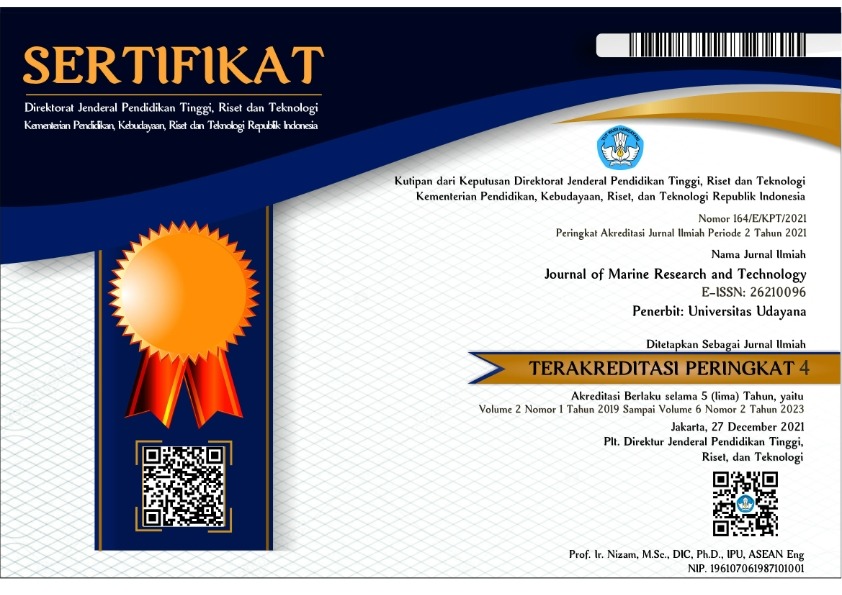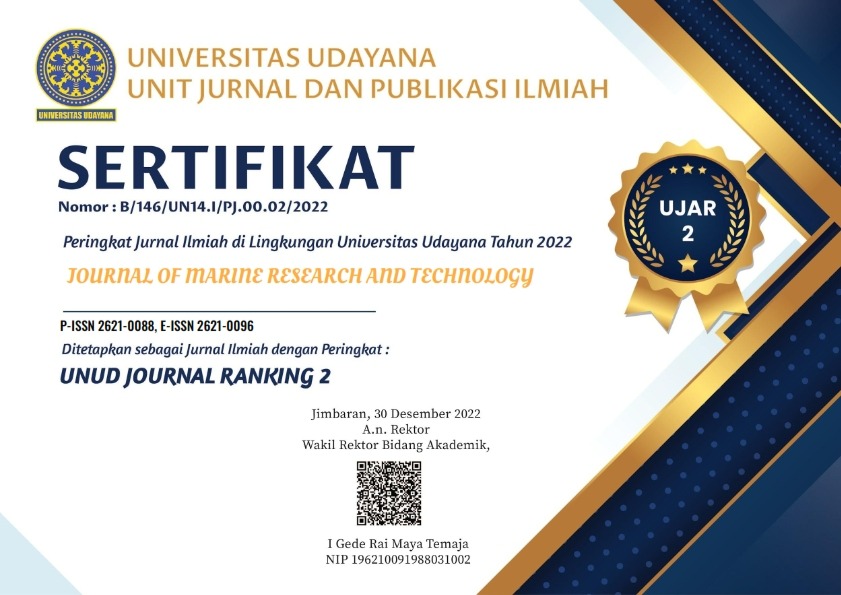Pengaruh Perbedaan Ukuran Jaring Insang Terhadap Hasil Tangkapan Ikan Tongkol Euthynnus sp. di Perairan Tenggara Kabupaten Karangasem
Gill Net, Tuna Euthynnus sp. , Southeast of Karangasem Regency
Abstract
Tuna is one of the main catching commodities in the waters of Southeast Karangasem. Fishers in the Southeast waters of Karangasem used drift gillnet operations to find pelagic fish such as mackerel. This study aims to determine the composition of fish catches using different net sizes and determine the effect of different gill nets on the catch of tuna fish in the southeast waters of the Karangasem Regency. The study was conducted for one month from mid-October to mid-November 2017 by following fishers' fishing trips. The fishing gear used was gill nets with differences, namely 2' 2.5 and 3 inches. The data was taken directly by operating the gill net, which has three different mesh sizes then the data was analyzed by ANOVA. Based on the research found four types of fish, namely Tuna (Euthynnus sp.), ikan kembung (Restrelliger kanagurta), barracuda (Sphyraena barracuda), and Manta sp. with details on 2.5 sized nets, three species (cobs, mackerel, barracuda), while sediment nets with a size of 2 (tuna and mackerel), and 3 (tuna and manta rays). Each gets two types of fish. Based on the ANOVA test, the calculated F results in this study are (7.7608) and F table (3.4668). The difference in the size of the gill nets significantly affects the catch of tongkol fish. The F test value shows that the F count was greater than the F table.
Downloads
Copyright Notice
The copyright to this article is transferred to Journal of Marine Research and Technology (JMRT). The copyright transfer covers the exclusive right and license to reproduce, publish, distribute and archive the article in all forms and media of expression now known or developed in the future, including reprints, translations, photographic reproductions, microform, electronic form (offline, online) or any other reproductions of similar nature.






